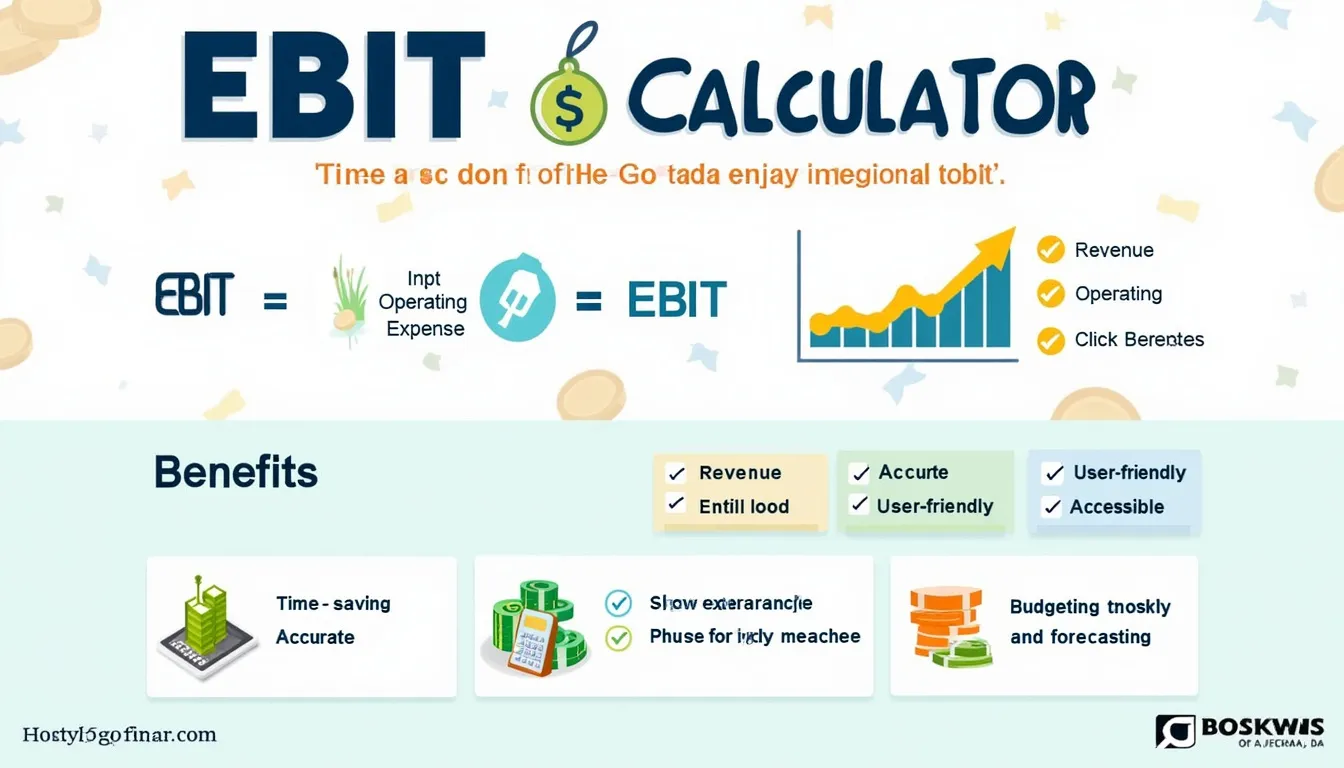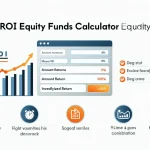Return On Capital Calculator
Is this tool helpful?
How to use the tool
- Enter EBIT: Key in operating profit before interest and tax. Example 1: 210 000; Example 2: 365 500.
- Add Tax Rate (%): Use statutory or effective rate. Example 1: 19; Example 2: 27.
- Input Invested Capital: Sum of equity and interest-bearing debt. Example 1: 740 000; Example 2: 1 250 000.
- Press Calculate: The script returns ROC as a percentage.
Formula
After-tax return on capital is
$$ \text{ROC}= rac{\text{EBIT}\,(1-\text{Tax Rate})}{\text{Invested Capital}} $$Worked example
- EBIT = 220 000
- Tax Rate = 18 % ⇒ 0.18
- Invested Capital = 750 000
Compute:
$$ 220\,000\times(1-0.18)=180\,400 $$ $$ rac{180\,400}{750\,000}=0.2405\;(\text{or }24.05\%) $$Your capital therefore earns 24.05 % after tax—well above a typical 10 % cost of capital.
Quick-Facts
- Average statutory corporate tax in OECD nations: 23.6 % (OECD Tax Database, 2023).
- Median ROC for S&P 500 companies: ~12 % (Investopedia, 2022).
- Weighted average cost of capital for U.S. firms: 8-10 % (Damodaran dataset, 2023).
- “A business earns economic profit only when returns exceed its cost of capital” (Damodaran, 2023).
FAQ
What is Return on Capital?
Return on Capital measures after-tax operating profit produced for every unit of capital invested (CFA Institute, 2020).
How do I know if my ROC is good?
Compare ROC to your weighted average cost of capital; any figure above that threshold creates shareholder value (Harvard Business Review, 2018).
How often should I calculate ROC?
Quarterly calculations track seasonal swings; annual reviews align with audited statements (PwC Corporate Finance Guide, 2022).
Does ROC include debt?
Yes, invested capital combines shareholders’ equity and interest-bearing debt, giving a leverage-neutral view (Investopedia, 2022).
How does ROC differ from ROE?
ROE ignores debt; ROC evaluates returns on total capital, enabling cross-company comparisons regardless of leverage (CFA Institute, 2020).
Can I improve ROC?
Boost EBIT through efficiency, trim idle assets, or refinance costly debt to raise returns on the same capital base (McKinsey, 2021).
Where do I find EBIT?
Locate EBIT on your income statement, typically labelled “operating income” (SEC Form 10-K instructions, 2023).
Why use after-tax EBIT in the formula?
Taxes are unavoidable cash outflows; adjusting EBIT for tax shows true economic return (Koller et al., “Valuation,” 2020).
Important Disclaimer
The calculations, results, and content provided by our tools are not guaranteed to be accurate, complete, or reliable. Users are responsible for verifying and interpreting the results. Our content and tools may contain errors, biases, or inconsistencies. Do not enter personal data, sensitive information, or personally identifiable information in our web forms or tools. Such data entry violates our terms of service and may result in unauthorized disclosure to third parties. We reserve the right to save inputs and outputs from our tools for the purposes of error debugging, bias identification, and performance improvement. External companies providing AI models used in our tools may also save and process data in accordance with their own policies. By using our tools, you consent to this data collection and processing. We reserve the right to limit the usage of our tools based on current usability factors.







